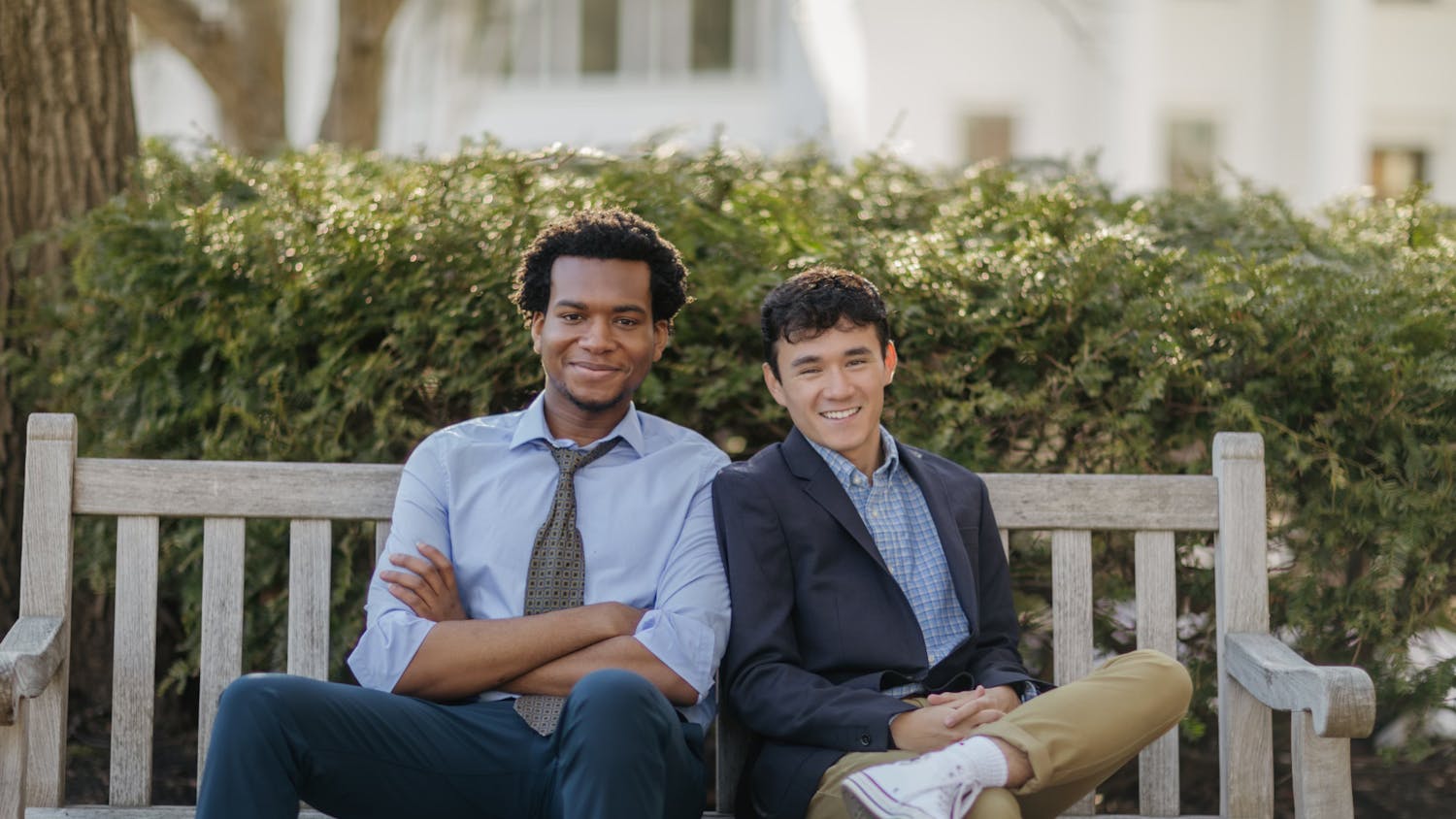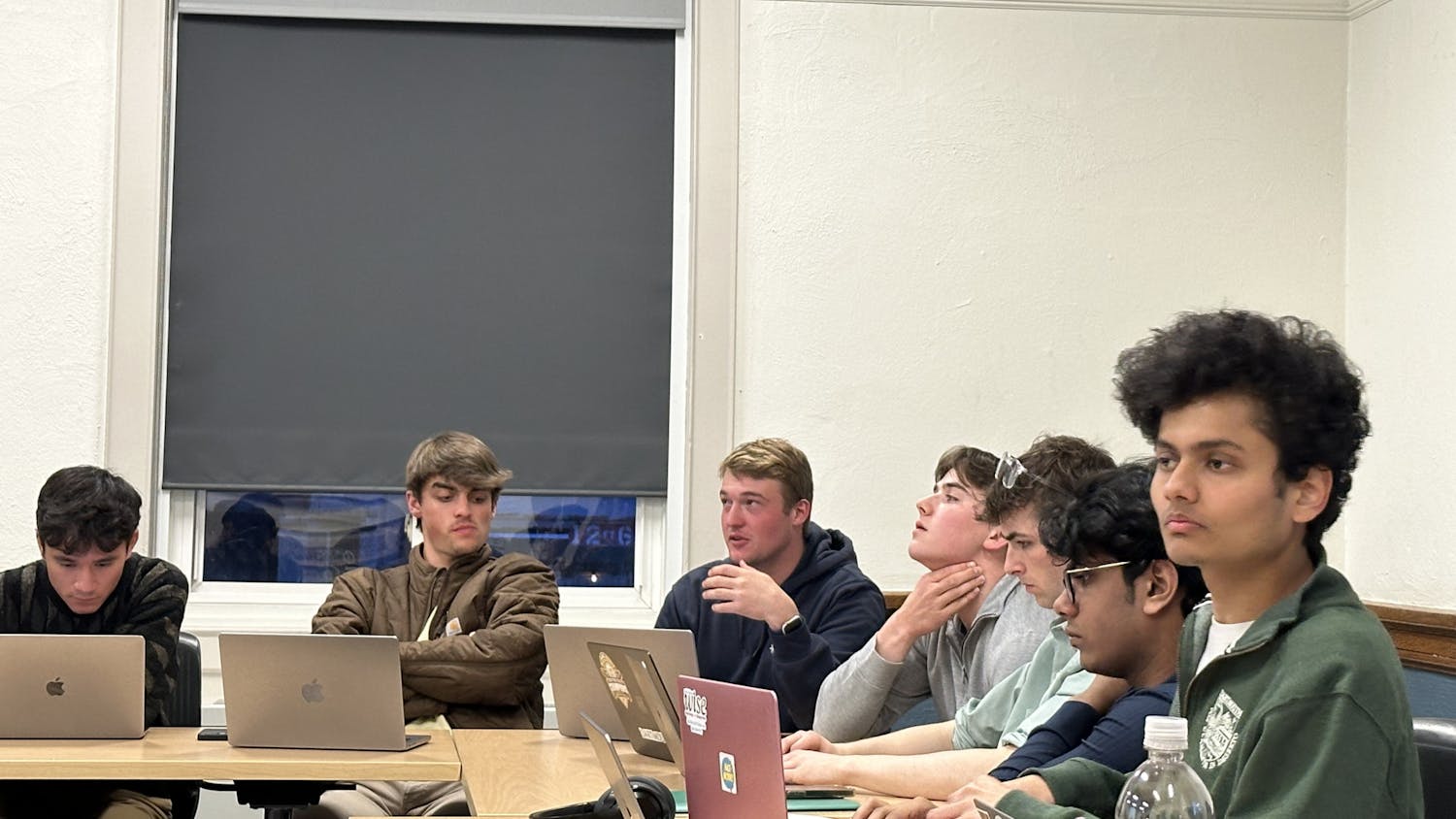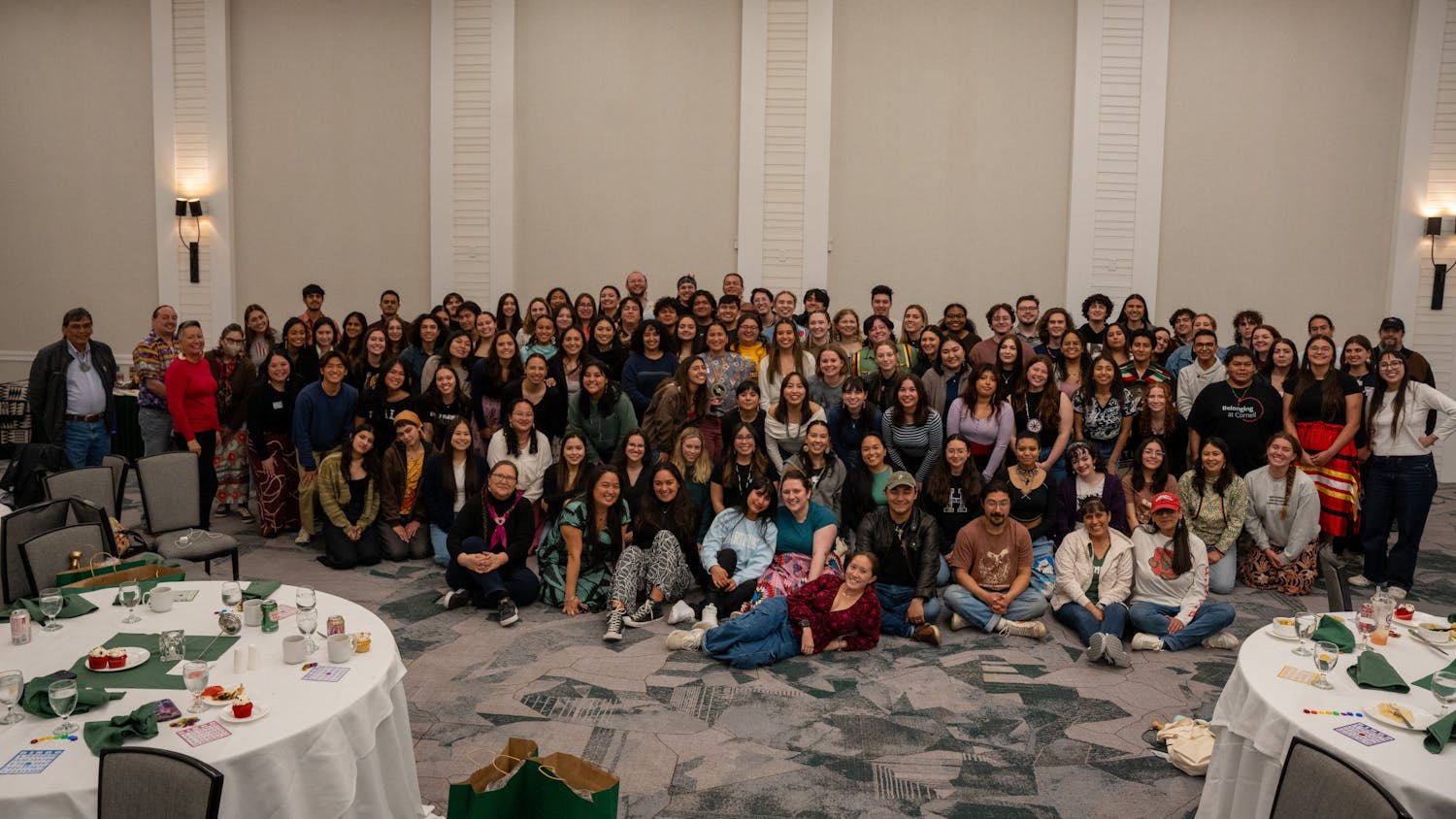When Earth science professor Robert Hawley offered his “Environmental Change” course for the first time in the fall of 2009, 47 students enrolled. Hawley was excited the next time he offered the class and had 78 students sign up. But the third time the course was offered, Hawley was less enthused to learn he would be teaching a class of 297 students. The class had so many difficulties due to size that Hawley capped the course enrollment, which now stands at 150 students. Nonetheless, this past fall, Hawley allowed 171 students into the class. Next time he offers the course, Hawley said he will cap it at 130 students.
Having more students in a class than space permits stands in contrast to the College’s liberal arts focus on small class sizes, highlighting the issue of over-enrolled and at-capacity courses at the College.
While the College prides itself on a liberal arts focus with small class sizes, 145 classes exceeded their listed enrollment caps in the past year, according to an analysis of the Registrar’s course timetable from the 2015 summer term to the current term conducted by The Dartmouth. In that time period, 2,487 courses were offered.
The problem is often the most acute in some of the most popular departments. The government department had the most over-enrolled courses over the past year, followed by the engineering department and more distantly by the computer science and Spanish departments in joint third.
Limitations on faculty hiring are a frequently-cited barrier to academic departments at the College offering more sections of a popular course.
Existing faculty can only take on so much of a course load. Most professors can only teach three or four courses a year, and those who teach particular courses are often the only faculty members in a department with the expertise to do so. For instance, music professor Hafiz Shabazz’s expertise on the practical and intellectual areas of Afro-Cuban music means he is the only professor who can teach the repeatedly over-enrolled Music 51, “Oral Tradition Musicianship.”
Faculty hiring is a particular concern for the government department, which faces high demand for courses as the second most popular major at the College.
“The deans are usually responsive, and we’ve been adding more faculty members, but not at the pace that we’d like,” government department chair and professor Dean Lacy said.
The department currently has 28 faculty, even though six years ago, a department committee recommended that the department have 32 faculty members by this year. In the mean time, the government department lost some faculty and gained new ones, while some candidates did not accept final offers. The department also hires visiting faculty to help with the courseload for classes.
The growth in the government faculty means that the situation with over-enrolled courses is better than it was in the early 2000s, said government professor William Wohlforth, who joined the department in that period.
Departments submit requests for new faculty members to the deans of the faculty in the summer. The deans then hold a meeting at end of each summer where they decide how resources are allocated to the different departments, according to geography department chair Susanne Freidberg. The dean’s office in turn depends on resources coming from president’s office. The deans rarely grant the full requests of departments, Freidberg said, though the geography department was recently granted a new faculty position as part of a diversity initiative.
“We all like having more faculty.” Wohlforth said
The hiring process in academia can be difficult and slow, and Dartmouth has to compete with elite peer institutions. Wohlforth noted that a strong department at the College will successfully recruit 40 to 50 percent of candidates it makes offers to.
Enrollments are not always limited just by the number of faculty departments are able to hire. A limitation on the number of sections of a course that a department can offer can be caused by something as simple as not having enough physical space. Freidberg was blunt about the issue in her department.
“We don’t have any more room in Fairchild, which is in terrible shape,” she said.
Silsby Hall exhibits similar problems, as it houses the departments and programs in anthropology, government, sociology, Latin American, Latino and Caribbean Studies and quantitative social science all under one roof.
The issue of inadequate office space also causes difficulties in attracting the most prized faculty candidates to the College, Freidberg said, adding that she thinks the issue will increasingly affect departments at the College.
Despite the difficulties in teaching larger courses, some professors enjoy the experience. Engineering professor John Collier, who has grown accustomed to teaching the “Introduction to Engineering” class with 70 students, said he was “exceptionally pleased” about the popularity of the course.
Religion department chair Randall Balmer, who has taught two over-enrolled courses in the past year, said he enjoys the opportunity to lecture to a larger group. However, Balmer acknowledged that there are limits to how large a class can be before there are difficulties keeping track of who is actually attending or not. Balmer taught the Sports, Ethics and Religion class in the fall of 2014 with 271 students, 64 of whom were later disciplined for academic honor code violations relating to faking attendance in class using clickers.
Hawley says tries to accomplish a degree of intimacy in his 150-plus person class by having all the students introduce themselves on the first day of class.
In addition, introductory courses in the government department have hard caps on enrollment, refusing students beyond the enrollment limit. Wohlforth’s introductory “International Relations” course has 50 students and 10 to 30 on a wait list, whereas Wohlforth said he would ideally teach 25 students in this class. He added that the popularity of government courses is not likely to be a result of easy grading. In fact, introductory courses cannot have medians higher than a B+ per government department policy.
Wohlforth said that he sees the “number one downside” to teaching at Dartmouth as teaching larger classes than he would like.
Lacy and Wohlforth also said that the ideal number of students in a mid-level course should be 15 to 25 students, significantly lower than it is presently. Currently, most mid-level government classes are capped at 35 students, though there are exceptions granted. In reality, Lacy’s “Campaigns and Elections” class had 48 students, and he noted that the experience of teaching this course at this size did not differ significantly from a 150-person class he had taught previously back at Ohio State University.
Classes in other disciplines also have limits on how many students can be taught effectively. Engineering professor Peter Robbie’s “Design Thinking” course requires class participation and hands-on group projects, and therefore cannot be taught as a giant lecture course, Robbie said. However, demand for the course led Robbie to teach the class three terms a year, whereas he originally only taught one section a year. The class, designed for 20 students, currently enrolls 30 and has a 70 person waitlist each term. Nonetheless, Robbie says the size of the course compares to similar courses offered at peer institutions like Stanford University and Northwestern University.
Problems with over-capacity courses can be exacerbated by the absence of graduate students, especially in the humanities and social sciences. Lacy noted that in many of the classes in Ohio State’s government department, are actually the same size as the ones offered by the government department at Dartmouth, as Ohio State can use graduate students to teach classes. Hawley said that he is able to teach his earth sciences classes with the assistance of one or two teaching assistants who help with grading. Additionally, student graders can be used to grade quantitative assignments like problem sets.
Some courses are over-enrolled because they offer the only chance for students to interact with particular subject matter. Asian and Middle Eastern studies and women’s, gender and sexuality studies lecturer Jung Ja Choi offered the only class in Korean literature, which proved very popular with students. Choi said that her students told her that they wished there were more Korean literature classes at the College, which does not have a Korean studies program. Choi also offered another over-enrolled course on Korea called “Sexing Korea.” Similarly, Shabazz’s course on oral traditions of musicianship offers students with no musical experience the chance to learn the rudiments of musical theory while also exploring their own cultures’ musical traditions. All three of Shabazz’s sections of the course in the past year have been over-enrolled.
Other classes are popular because they speak to topical issues. Lacy’s “Campaigns and Elections” class was particularly popular in the run-up to the New Hampshire primary, while the Geography department’s introductory class, Geography 2, covers the popular topic of global health. Hawley’s class gives students the opportunity to cover topics of social relevance relating to climate change, while allowing students to satisfy a science distributive requirement.
Almost all the faculty interviewed typically allow students to enroll in their classes if they are seniors who will not get a chance to take the class again or if they need the course to satisfy majors and minor requirements. Expressing a compelling intellectual interest in a class can also help. For instance, some of the students that Wohlforth allowed in his over-enrolled class on Russian Foreign Policy were Russian majors.



